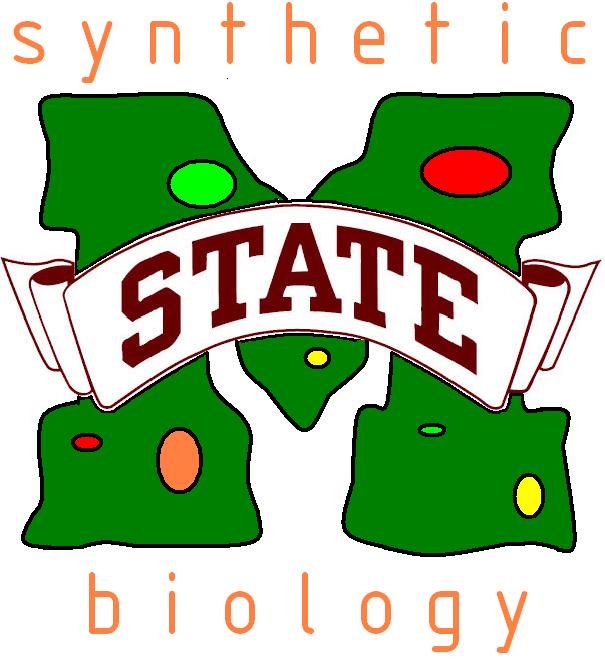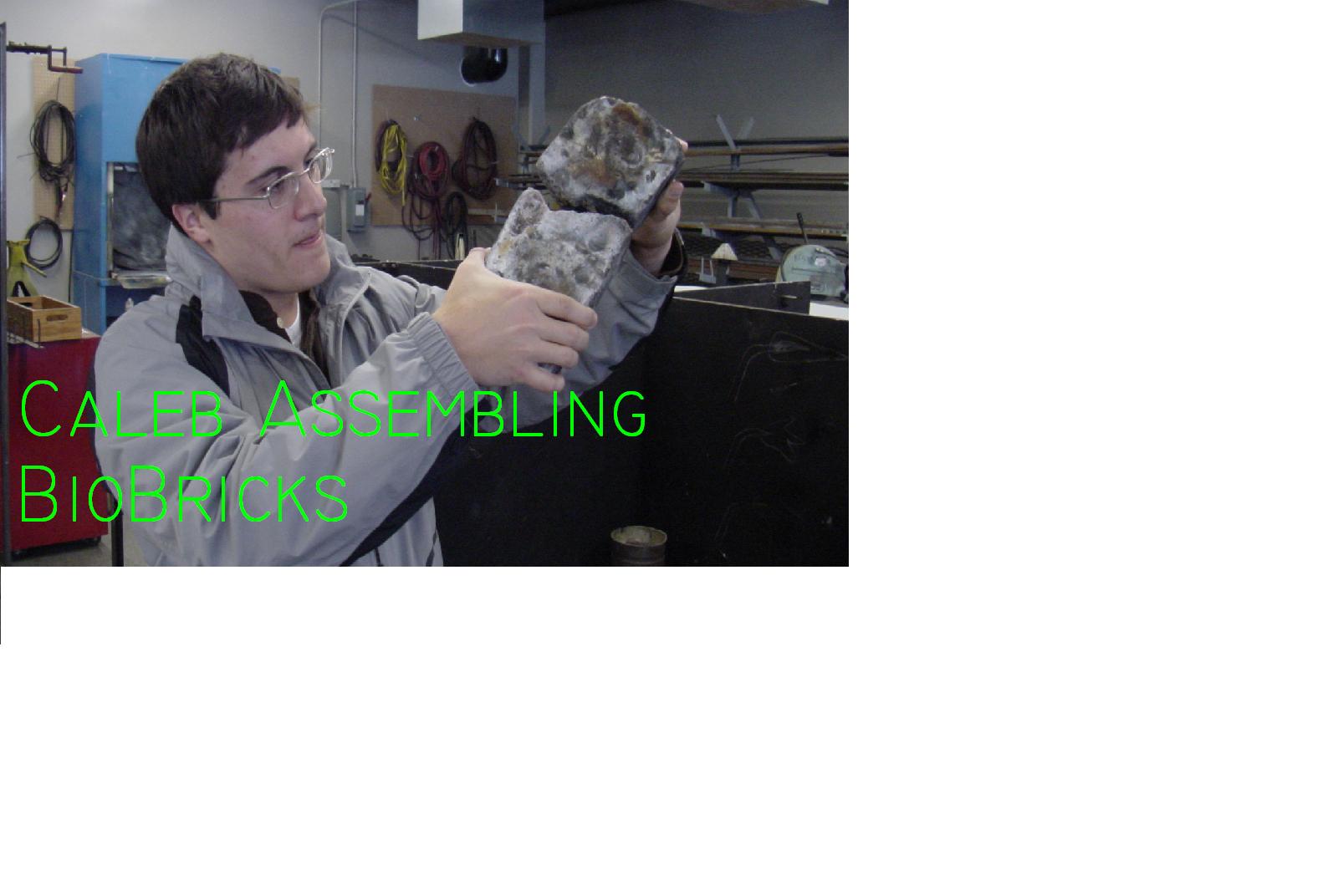|
|
| (22 intermediate revisions not shown) |
| Line 17: |
Line 17: |
| | <!--End Tabs--> | | <!--End Tabs--> |
| | | | |
| - | | + | [[Image:MStateblob.JPG|200 px|right]] |
| - | [[Image:Bandit2.JPG|350 px|center]]
| + | = '''Overall project''' = |
| - | {|align="justify"
| + | |
| - | |You can write a background of your team here. Give us a background of your team, the members, etc. Or tell us more about something of your choosing.
| + | |
| - | |
| + | |
| - | |-
| + | |
| - | Lignin is a nearly ubiquitous biopolymer found throughout the biosphere. It is a major constituent of plant tissue, and proves to be the major limitation of wood biodegradation. Also, its resistance to degradation decreases the availability of other plant tissue components, most notably cellulose and hemicellulose. Lignin is found in many wood products, including newspaper print, and it lends the ‘hardness’ to wood materials. Its limitation on wood product bioavailability is due to the complex polymeric structure which proves difficult to break. Therefore, it presents a formidable physical boundary to enzymes directed at the other constituents of plant matter.3
| + | |
| - | | + | |
| - | In this research, we seek to gather the enzymes and cofactors necessary for the complete degradation of Lignin. These will be integrated into a bacterial genetic system using the BioBrick standard of assembly. The system will consist of necessary genetic sensors and controls to ensure optimal enzymatic activity in the presence of lignin. It will also improve upon existing methods which use only the White Rot Fungi, or enzymes alone. This method is specific for lignin, and will not degrade other plant matter. Also, it will be more economic than purely enzymatic means due to the self-replicating and control factors built into the microorganism.
| + | |
| - | | + | |
| - | It has been shown that Laccase, Lignin Peroxidase (LiP), and Manganese Peroxidase (MnP) are vital enzymes for the complete degradation of Lignin.2 We will concentrate on optimizing the production and activation of one or more of these enzymes as BioBricks. Their function is usually dependent on additional compounds which activate the enzyme into its functional form. In this paper, we will discuss Lignin Peroxidase specifically, and the factors affecting its performance. Also, we will outline the steps necessary to develop a genetic machine capable of degrading lignin.
| + | |
| - | | + | |
| - | | + | |
| - | Lignin Peroxidase
| + | |
| - | | + | |
| - | LiP has been shown to be involved in lignin degradation by white rot fungi. Lignin polymer, however, does not interact with the enzyme to initiate activity. Instead, Veratryl Alcohol, a metabolite of white rot fungi, binds to the LiP active site to initiate depolymerization. Veratryl Alcohol (Valc) is oxidized into veratraldehyde by LiP using one equivalent of H2O2.5
| + | |
| - | | + | |
| - | In the plant matter, fungal hyphae spread and secrete lignolytic enzymes, along with hemcellulolytic enzymes.5 LiP is involved in the initial breakdown of the polymer system. The other enzymes, MnP and laccase, are involved in degradation of LiP products.2 LiP and Valc undergo a redox cycle which produces radical Valc cations. These radicals provide the oxidative power for lignin degradation.5 The role of Valc has been debated in the literature. Some research claims it protects LiP from oxidation by H2O21, while others propose it as the actual oxidant in the degradation process.5
| + | |
| - | | + | |
| - | So, to degrade lignin using LiP, a large source of Veratryl Alcohol must be present as well as an equal supply of hydrogen peroxide. Also, much literature acknowledges the influential effects of Nitrogen on LiP activity where just a small increase in the gas results in significant LiP production. Thus, we have a three part system that results in a controllable method for initiation of lignin degradation.
| + | |
| - | | + | |
| - | For the project we will need to find a method of obtaining the genetic sequence for LiP. It is in the literature, so it could be synthesized, or it could be isolated from white rot fungi (Phanerochaete chrysosporium). This genetic sequence would then need to be converted to BioBrick format for implementation. To successfully degrade lignin, however, we must be able to produce Valc. White rot fungi produce Valc from phenylalanine, 3,4-dimethoxycinnamyl alcohol and veratrylglycerol, where veratrylglycerol is synthesized from 3,4-dimethoxycinnamyl alcohol by a secondary metabolic system. Its synthesis is inhibited by L-glutamate. Furthermore, the actual process of Valc production was shown to occur from degradation of 3,4-dimethoxycinnamyl alcohol by the ligninolytic system; where the above compound is produced from the secondary metabolic system.4
| + | |
| - | | + | |
| - | Finally, a means of hydrogen peroxide production is necessary to facilitate the oxidative action of LiP. This must be investigated to properly implement and control in a bacterial system.
| + | |
| - | | + | |
| - | | + | |
| - | Conclusion
| + | |
| - | | + | |
| - | We have found that LiP is an important factor in lignin degradation. It initiates the complete process, and functions in breaking up the lignified plant matter. Proper function of the enzyme requires hydrogen peroxide and a secondary metabolite of White Rot fungi, Veratryl Alcohol. The genetic sequence for LiP is known, and can be produced and cloned into a bacterial genome in a variety of ways including: direct genetic synthesis and isolation from a white rot species. Veratryl alcohol looks to be somewhat complicated in synthesizing, but further investigation into the literature is needed. It is necessary that we produce this because it is vital to the function of the enzyme. Though some have argued that LiP can degrade lignin without Valc, the activity is greatly depressed.
| + | |
| - | | + | |
| - | The goals of our team should be to cover relevant research for methods of producing Veratryl Alcohol. Also, a method for obtaining the Lignin Peroxidase sequence should be found. Finally, the factors affecting the activity of the enzyme should be investigated so that an optimal system can be designed to perform at desired specifications.
| + | |
| - | | + | |
| - | We propose that the team split into two groups; one should determine various methods for obtaining and integrating the LiP sequence into BioBrick format. They should also evaluate the methods according to our time, equipment, and financial limitations. We should arrive at a method that is easy, quick, and effective for transferring LiP, in part format, into the host. The other team should investigate the metabolic method for producing Valc. It was noted above that the actual metabolite may be 3,4-dimethoxycinnamyl alcohol. Therefore, this compound and its biosynthesis should also be investigated.
| + | |
| - | | + | |
| - | If we can arrive at a solid plan for developing these two applications before the end of school, our project should be well prepared to begin work in June. Further analysis of the other enzymes involved in complete degradation would be beneficial, but the time constraints present a problem. Therefore, to fully tackle the problem involving LiP degradation, it may be necessary to postpone work on the other systems. However, for competitive purposes, excess problems would only help us. So, we should analyze the work involved in approaching these other enzymes, as well as the feasibility of implementing them into the project.
| + | |
| - | | + | |
| - | | + | |
| - | | + | |
| - | | + | |
| - | References
| + | |
| - | | + | |
| - | We gathered this information from a variety of sources, many of which said the same thing. Also, an understanding of their results is beneficial to the entire team. Therefore, we will only present a list of the works we used in writing this paper as a starting point for investigation into the material.
| + | |
| - | | + | |
| - | | + | |
| - | 1A M Cancel, A B Orth, and M Tien. Lignin and veratryl alcohol are not inducers of the ligninolytic system of Phanerochaete chrysosporium. Appl Environ Microbiol. 1993 September; 59(9): 2909–2913. http://www.pubmedcentral.nih.gov/pagerender.fcgi?artid=182385&pageindex=1.
| + | |
| - | | + | |
| - | | + | |
| - | 2Claudia Eggerta, Ulrike Tempa and Karl-Erik L. Erikssonb, * Laccase is essential for lignin degradation by the white-rot fungus Pycnoporus cinnabarinus. 1997 Federation of European Biochemical Societies. Published by Elsevier Science B.V. http://www.sciencedirect.com/science?_ob=ArticleURL&_udi=B6T36-3R85JMS-M&_user=1512607&_rdoc=1&_fmt=&_orig=search&_sort=d&view=c&_acct=C000053407&_version=1&_urlVersion=0&_userid=1512607&md5=65ebe4cb681f910227f0a0083ed61f69.
| + | |
| - | | + | |
| - | | + | |
| - | 3Richard, T. The Effect of Lignin on Biodegradability. Cornell Waste Management Institute. 1996. http://www.css.cornell.edu/compost/calc/lignin.html.
| + | |
| - | 4Mikio Shimada1, Fumiaki Nakatsubo1, T. Kent Kirk1, 2 and Takayoshi Higuchi. Biosynthesis of the secondary metabolite veratryl alcohol in relation to lignin degradation in Phanerochaete chrysosporium. Archives of Microbiology. Volume 129, Number 4 / June, 1981 http://www.springerlink.com/content/h42904v73141046k/.
| + | |
| - | | + | |
| - | 5Hans E. Schoemaker' and Klaus Piontek2. On the interaction of lignin peroxidase with lignin. Pure & Appl. Chem., Vol. 68, No. 11, pp. 2089-2096, 1996. http://old.iupac.org/publications/pac/1996/pdf/6811x2089.pdf.
| + | |
| - | | + | |
| - | |
| + | |
| - | |}
| + | |
| - | | + | |
| - | [[Image:MStateblob.JPG|300 px|center]] | + | |
| - | | + | |
| - | <!--- The Mission, Experiments --->
| + | |
| - | | + | |
| - | {| style="color:#1b2c8a;background-color:#0c6;" cellpadding="3" cellspacing="1" border="1" bordercolor="#fff" width="62%" align="center"
| + | |
| - | !align="center"|[[Team:Mississippi_State|Home]]
| + | |
| - | !align="center"|[[Team:Mississippi_State/Team|The Team]]
| + | |
| - | !align="center"|[[Team:Mississippi_State/Project|The Project]]
| + | |
| - | !align="center"|[[Team:Mississippi_State/Parts|Parts Submitted to the Registry]]
| + | |
| - | !align="center"|[[Team:Mississippi_State/Modeling|Modeling]]
| + | |
| - | !align="center"|[[Team:Mississippi_State/Notebook|Notebook]]
| + | |
| - | |}
| + | |
| - | (''Or you can choose different headings. But you must have a team page, a project page, and a notebook page.'')
| + | |
| - | | + | |
| - | | + | |
| - | | + | |
| - | == '''Overall project''' ==
| + | |
| - | | + | |
| - | *[[Team:Mississippi_State/So Far|So Far]]
| + | |
| - | *[[Team:Mississippi_State/What We've Done And Why|What We've Done And Why]]
| + | |
| - | *[https://2008.igem.org/Judging Requirements]
| + | |
| - | *[http://dspace.mit.edu/bitstream/1721.1/21168/1/biobricks.pdf BioBrick Design]
| + | |
| - | *[http://mit.edu/endy/www/scraps/comic/AiSB.vol1.pdf An Intro to SynBio]
| + | |
| - | Your abstract
| + | |
| | | | |
| | == Project Details== | | == Project Details== |
| | | | |
| | + | *[[Team:Mississippi State/project description|In Depth Description of our Project]] |
| | + | We began work in May obtaining cDNA samples of Phanerochaete Chrysosporium. We initially worked with the Mississippi State University Forest Products Lab, but we could never get any PCR results. We contacted the University of Wisconsin Forest Products Lab (Jill Gaskell) and obtained samples of cDNA from PC (BKM strain and RP strain). We got no results from this either. At this point, we consulted Jill and she advised that we make our primers more specific for the noncoding regions of the gene. This worked and we obtained our gene (LipA). |
| | | | |
| | | | |
| | + | === The Experiments === |
| | | | |
| | + | We were able to obtain a purified Lignin Peroxidase from PC by doing sequential PCRs of the non coding region and then the coding region. There was difficulty in cloning the gene into the plasmids we used, pGEM and pPIC6alpha. However, once we were able to clone the gene into pGEM, it was easily cloned into pPIC6alpha as well. However, this work required the whole summer and we had to work around classes. We have been able to BioBrick our part and get it into Pichia for testing. At this point we are in the middle of testing the gene and the enzyme activity. |
| | | | |
| - | === Part 2 ===
| |
| | | | |
| | | | |
| | + | [[Image:CalebBioBricks.JPG|400 px]][[Image:SamBioBricks.JPG|400 px]] |
| | | | |
| | + | == Results == |
| | | | |
| | + | We have isolated a Lignin Peroxidase gene from Phanerochaete Chrysosporium. The gene is highly analogous to many other Lignin Peroxidase genes, especially Lignin Peroxidase A. It was sequenced and uploaded to GenBank for comparisons and showed an extremely high degree of homology with other Lignin Peroxidases. The gene has been put into standard BioBrick format, but it has not been characterized due to time constraints. This, as well as development of a functional system will be part of our future work. |
| | | | |
| - | === The Experiments === | + | ='''Our Part'''= |
| | | | |
| - | | + | We made a coding part for Lignin Peroxidase. It is currently in testing and will hopefully be done by the Jamboree. This part can be used for a biomass degradation system. There has also been talk that this type of enzyme has promise in breaking down synthetic polymers like plastics. This would be incredibly cool and we think people should try and tackle this problem. |
| - | | + | |
| - | | + | |
| - | === Part 3 ===
| + | |
| - | | + | |
| - | == Results ==
| + | |
We began work in May obtaining cDNA samples of Phanerochaete Chrysosporium. We initially worked with the Mississippi State University Forest Products Lab, but we could never get any PCR results. We contacted the University of Wisconsin Forest Products Lab (Jill Gaskell) and obtained samples of cDNA from PC (BKM strain and RP strain). We got no results from this either. At this point, we consulted Jill and she advised that we make our primers more specific for the noncoding regions of the gene. This worked and we obtained our gene (LipA).
We were able to obtain a purified Lignin Peroxidase from PC by doing sequential PCRs of the non coding region and then the coding region. There was difficulty in cloning the gene into the plasmids we used, pGEM and pPIC6alpha. However, once we were able to clone the gene into pGEM, it was easily cloned into pPIC6alpha as well. However, this work required the whole summer and we had to work around classes. We have been able to BioBrick our part and get it into Pichia for testing. At this point we are in the middle of testing the gene and the enzyme activity.
We have isolated a Lignin Peroxidase gene from Phanerochaete Chrysosporium. The gene is highly analogous to many other Lignin Peroxidase genes, especially Lignin Peroxidase A. It was sequenced and uploaded to GenBank for comparisons and showed an extremely high degree of homology with other Lignin Peroxidases. The gene has been put into standard BioBrick format, but it has not been characterized due to time constraints. This, as well as development of a functional system will be part of our future work.
We made a coding part for Lignin Peroxidase. It is currently in testing and will hopefully be done by the Jamboree. This part can be used for a biomass degradation system. There has also been talk that this type of enzyme has promise in breaking down synthetic polymers like plastics. This would be incredibly cool and we think people should try and tackle this problem.
 "
"



